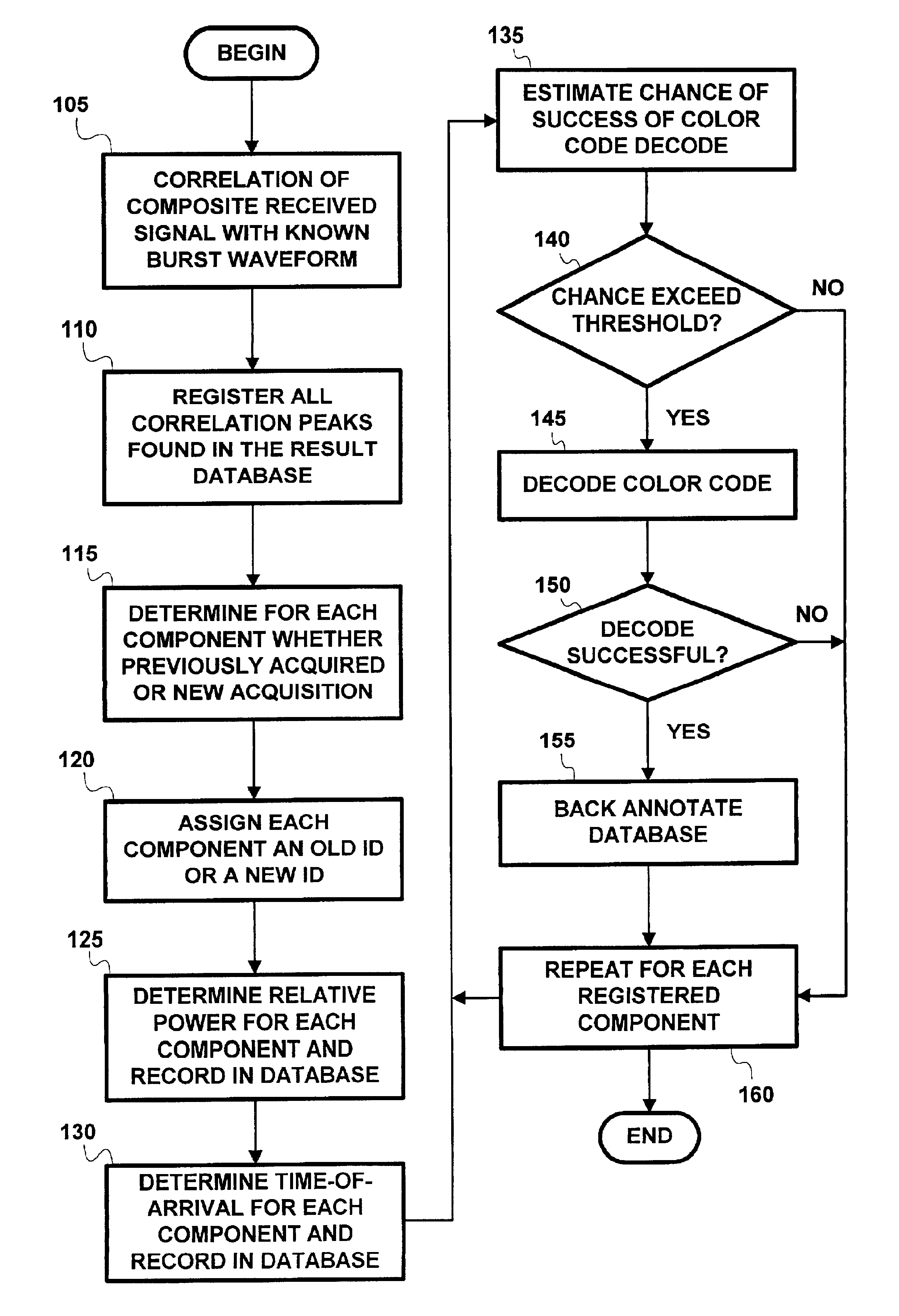Method and apparatus for co-channel interference measurements and base station color code decoding for drive tests in TDMA, cellular, and PCS networks
a technology of cochannel interference and color code decoding, which is applied in the field of cochannel interference measurement and base station color code decoding for drive tests in tdma, cellular, and pcs networks, can solve the problems of difficult decoding of such signals, limited utility of the described method of cochannel interference measurement and identification, and major limitations of cellular and pcs wireless telephone networks
- Summary
- Abstract
- Description
- Claims
- Application Information
AI Technical Summary
Benefits of technology
Problems solved by technology
Method used
Image
Examples
Embodiment Construction
[0022]Co-channel interference in a wireless network is identified and quantified. Rather that using color code identification, a more reliable identification property of each co-channel component of the received composite signal is used, namely, the time of arrival of a known part of a signal. Detection and timing measurement is performed even in presence of stronger signals by focusing selectively on bursts having fixed contents (e.g., the FCCH burst used in GSM for frequency correction).
[0023]The repetitive measurements of the time-of-arrival of each of the interfering components of the signal during a drive test enables determination of the geographical location of the interfering co-channel base stations. An algorithm according to an embodiment of the present invention is described as follows.
[0024]Referring to FIG. 1, at each measurement point during the course of a drive test, correlate the received composite signal with the a prior known burst waveform 105, such as FCCH burst...
PUM
 Login to View More
Login to View More Abstract
Description
Claims
Application Information
 Login to View More
Login to View More - R&D
- Intellectual Property
- Life Sciences
- Materials
- Tech Scout
- Unparalleled Data Quality
- Higher Quality Content
- 60% Fewer Hallucinations
Browse by: Latest US Patents, China's latest patents, Technical Efficacy Thesaurus, Application Domain, Technology Topic, Popular Technical Reports.
© 2025 PatSnap. All rights reserved.Legal|Privacy policy|Modern Slavery Act Transparency Statement|Sitemap|About US| Contact US: help@patsnap.com



